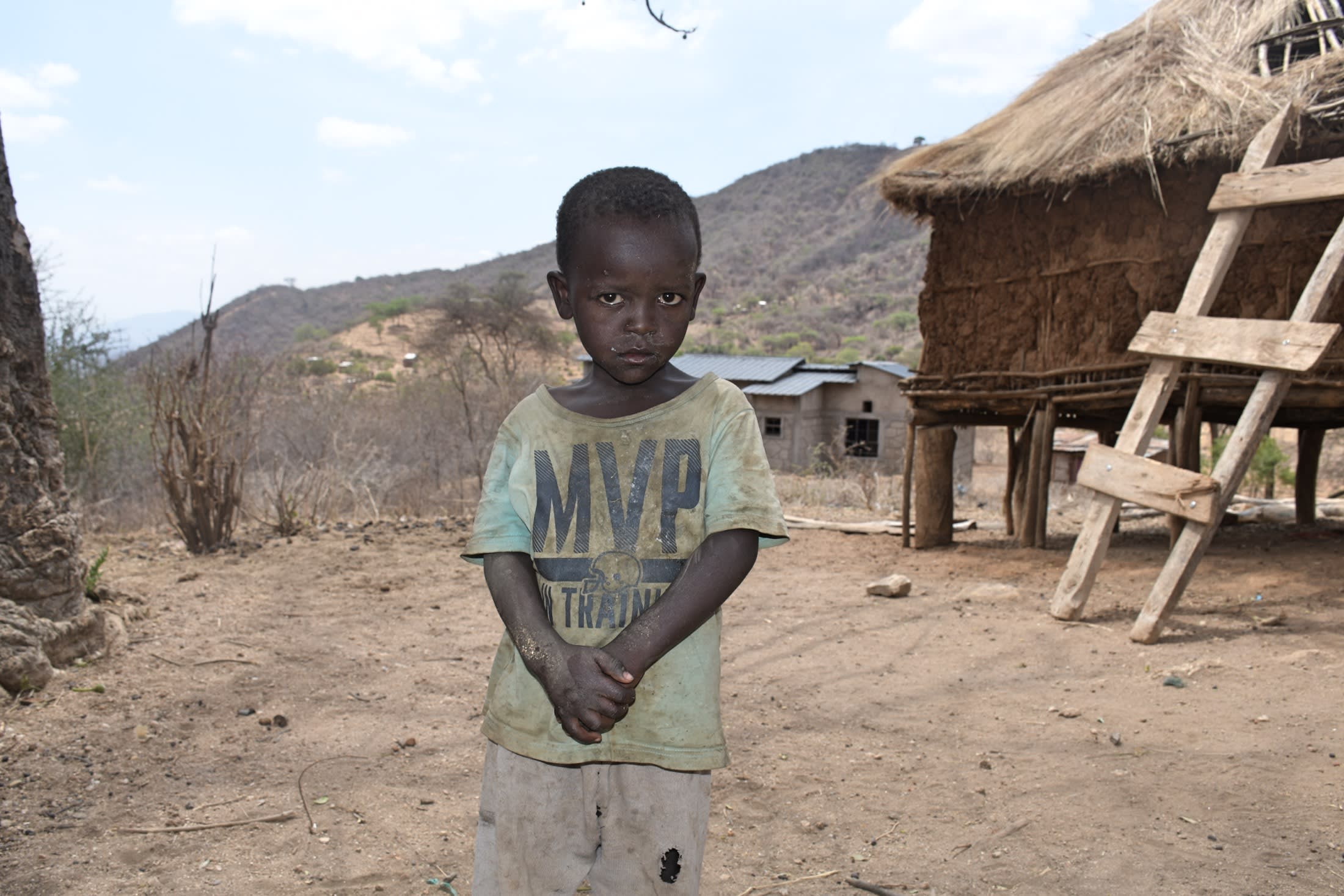Between the extreme drought and far distance to their water source, the 3,500 people of Nzimba can never get enough water.
Although we have helped the people of Nzimba with implementing two sand dams and corresponding shallow wells within the community in past years, there is still a significant portion of people who live more than three kilometers away from the well. For them, each trip to the water source takes several hours, leaving them drained and unable to perform other essential tasks like farming, cooking, or cleaning.
Community members also have the option to get water from a public tap, but the fee per jerrycan is expensive —and it's still far away from most of the population. Most people in Nzimba are struggling with a reduced income due to the drought and the current water crisis, so the tap is more of a last resort than a first choice.

"Despite my senior age, I have to go fetch water daily from the shallow well or public tap," said 79-year-old farmer Munyoki Mwende (pictured above). "The area is steep, and the journey is long because I stay far away from the water sources. This leaves me with little energy to focus on activities like personal hygiene and sanitation and preparing my land."
While the untenable distance is chief among the problems associated with the water crisis in Nzimba, it's not the only issue. The past few years have brought severe drought for this region, which is making the rain in this region even more erratic than normal. To counteract this, community members are rationing the water at the well, so even the families close to the water sources don't have enough water to tend to all of their needs.

"There is not enough water at home," said five-year-old Paul K (shown above). "Sometimes food is prepared late because my mother may take [a] long [time] to fetch water and come back home. When my mother leaves to fetch water, I am left home alone, and often there is nothing to eat because [the] water is not enough for cooking."
Another sand dam will help retain the local river's water closer to the remote areas of the community and, at the same time, a new hand-dug well will lessen the burden on the community's other water sources. Hopefully, with this intervention, the shortages and the rationing will end, and people will have enough water for their everyday needs.
Note: Our proposed water point can only serve 300 people per day. We are working with the community to identify other water solutions that will ensure all 3,500 people in the community have access to safe and reliable drinking water.
The Proposed Solution, Determined Together...
At The Water Project, everyone has a part in conversations and solutions. We operate in transparency, believing it benefits everyone. We expect reliability from one another as well as our water solutions. Everyone involved makes this possible through hard work and dedication.
In a joint discovery process, community members determine their most advantageous water solution alongside our technical experts. Read more specifics about this solution on the What We're Building tab of this project page. Then, community members lend their support by collecting needed construction materials (sometimes for months ahead of time!), providing labor alongside our artisans, sheltering and feeding the builders, and supplying additional resources.
Water Access for Everyone
This water project is one piece in a large puzzle. In Kenya, Sierra Leone, and Uganda, we’re working toward complete coverage of reliable, maintained water sources that guarantee public access now and in the future within a 30-minute round trip for each community, household, school, and health center. One day, we hope to report that this has been achieved!
Training on Health, Hygiene & More
With the community’s input, we've identified topics where training will increase positive health outcomes at personal, household, and community levels. We’ll coordinate with them to find the best training date. Some examples of what we train communities on are:
- Improved hygiene, health, and sanitation habits
- Safe water handling, storage & treatment
- Disease prevention and proper handwashing
- Income-generation
- Community leadership, governance, & election of a water committee
- Operation and maintenance of the water point

 Protected Dug Well
Protected Dug Well
 Rehabilitation Project
Rehabilitation Project














